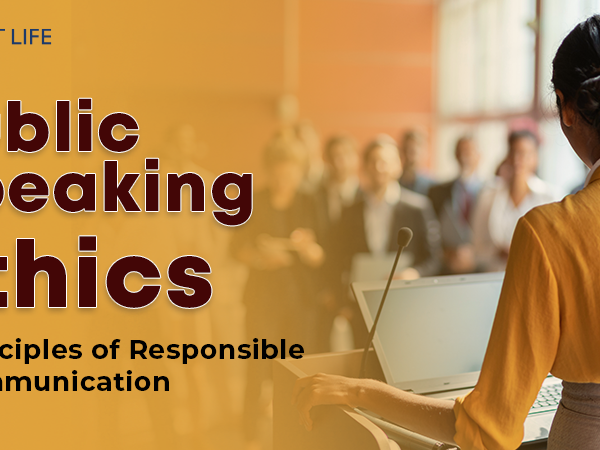Start this journey! Dive into the amazing world of effective speech delivery. Find out the secrets of how to engage an audience. Transform practice into incredible performances!
Connect with the audience from the start. Get their attention with interesting opening lines and stories. This sets the stage for a remarkable speech.
Understand body language and vocal projection. Use facial expressions, gestures, and tone to emphasize your message. Show confidence and be authoritative.
Martin Luther King Jr.’s “I Have a Dream” speech is a shining example of great communication. King inspired millions with his passion and words. It’s proof of the potential of effective speech.
To be a masterful speaker, practice storytelling, connecting with an audience, and using body language. Draw inspiration from great orators. Embrace your inner orator! Make a lasting impact with your words.
Importance of Effective Speech Delivery
Delivering a speech effectively is essential for capturing the audience’s attention and getting your message across. Here are 4 key reasons why:
- Engagement: Deliver your speech in an engaging way and your listeners will stay hooked until the end. This ensures that your message resonates with them.
- Clarity: Delivery makes your speech clearer. This helps people understand your words and the main points of your message.
- Persuasion: Good delivery has a persuasive effect. Use the right tone, gestures, and body language to establish a connection with the audience and sway them towards your viewpoint.
- Rapport-building: Effective delivery builds a rapport between you and the audience. Your confident demeanor builds trust and engagement.
It is also important to remember that delivery requires practice and preparation. Pay attention to vocal variety, pacing, enunciation, body posture, and gestures.
Take Tony Robbins as an example – he once gave an inspiring speech that changed the lives of many. His passion filled every word and the crowd was entranced. By delivering the speech with such passion and conviction, Tony Robbins inspired and empowered the audience, leaving a lasting impact on their lives.
Preparing for Speech Delivery
Maximize potential as a speaker and successfully convey your message with this 6-step guide on prepared speech delivery. Follow these steps:
- Determine the purpose and select the topic.
- Research for relevant information and supportive evidence.
- Create an outline, using headings and subheadings.
- Craft an attention-grabbing intro and clearly state the purpose.
- Follow with a coherent presentation of main points and examples.
- Incorporate visuals like slides or props to enhance understanding.
- Lastly, practice delivery techniques like pacing, modulation, body language, and eye contact. Get feedback from others to refine further.
Don’t forget to refine language for the target audience. Look to Martin Luther King Jr.’s “I Have a Dream” speech for inspiration – a powerful, passionate, and compelling speech that captivated the audience and started a movement.
Practicing Speech Delivery
Learn the art of speech delivery with this 6-step guide!
- Prep: Research & gather info. Organize thoughts and make an outline.
- Warm-up: Do vocal exercises like breathing, tongue twisters & scales.
- Memorize: Get key points down. Practice without notes or prompts.
- Body Language: Check your facial expressions, gestures & posture in a mirror.
- Rehearse: Keep increasing the speed & emphasize important words.
- Feedback: Get constructive criticism from trusted people. Join a club to practice.
Remember, each individual has a unique style. Embrace it & stay open to learning opportunities.
True History: Winston Churchill was a master of speech delivery. His powerful speeches during WWII motivated & inspired the UK. He was meticulous in his prep & used rhetorical devices to great effect. His speech delivery had a major impact on history.
Techniques for Effective Speech Delivery
Speech delivery is key to captivating your audience and getting your message across. To master the skill, here are three techniques to enhance it:
- Body Language: Move and gesture purposefully to engage the audience. Use hand and facial expressions to emphasize points and convey emotions. Stand tall and keep an open posture.
- Vocal Range and Tone: Vary your pitch, volume, and tone. Pause for emphasis and modulate your voice for a dynamic flow.
- Eye Contact: Establish eye contact with your audience to build trust. Look at individuals or small groups. Make your speech personal and persuasive.
Remember, successful speech delivery goes beyond words. To perfect it, rehearse in front of a mirror or record yourself. Practice makes perfect!
Also Read: Find Your Passion: A Path to Self-Discovery and Fulfillment
Overcoming Nervousness
Nerves can trip up even the most eloquent speakers, but with a few effective strategies, you can conquer them. Preparing is key. Invest time in practicing your speech and knowing it backwards and forwards. This will build confidence and reduce nervousness.
Visualize success too. Imagine you’re delivering an awesome speech to a captivated audience. This exercise helps create positive thoughts and boosts your assurance.
Controlled breathing is invaluable for fighting nerves. Slow, deep breaths can soothe the mind and relax the body. Taking care of yourself – like getting enough sleep, eating well and exercising – also helps reduce anxiety.
Let me share an inspiring story. A young executive was set to give a presentation to lots of industry experts. Despite feeling jittery beforehand, she practiced and rehearsed her speech. On the day, she focused on visualizing success and took deep breaths for inner calmness. As she spoke confidently and connected with the audience, her nerves vanished. By using these strategies, she conquered her nerves and gave an outstanding performance.
As this tale shows, conquering nervousness isn’t impossible. With dedication, visualization exercises, controlled breathing and self-care – anyone can beat their anxiety and speak confidently. Remember everyone gets nervous sometimes – how we manage it makes us stand out as confident speakers.
Tips for Captivating the Audience
To captivate your listeners, you need effective speech delivery! Here are some tips to try:
- Be personal: Relate to the audience with anecdotes or experiences.
- Use body language: Use gestures, facial expressions, and posture to make your message more impactful.
- Tell stories: Storytelling adds emotion and helps the audience understand your message better.
- Use visual aids: Slides or props can add visual interest and comprehension to your speech.
- Pause for emphasis: Pauses give time to reflect, create suspense, and highlight important points.
Adapt your speech to meet the needs of your listeners. And don’t forget the power of humor! Incorporate tasteful humor at appropriate moments to keep engagement high.
Did you know? Visuals can increase information retention in the audience by a whopping 400%!
Also Read: Top 100 Commonly Used A to Z Phrasal Verbs for English Fluency
Conclusion
For great speech delivery, it’s important to practice and plan. Engage the audience with body language, vocal variation, and clear pronunciation. Incorporate visuals and tech to boost the impact of the speech. Adapt to the audience’s needs and interests to keep their attention. Remember that practice makes perfect!
To make it unique, include storytelling techniques to engage the audience emotionally. Use rhetorical devices like similes and metaphors. Also, adjust pacing and rhythm for emphasis.
We recall an inspiring incident involving Dr. Martin Luther King Jr. His “I Have a Dream” speech in 1963, inspired millions. His voice and powerful message advocating for racial equality captivated the audience. His ability to connect emotionally, through vivid language and imagery, showcases the power of effective speech delivery. Know More – The Fluent Life
Frequently Asked Questions
Q1: What are some tips for effective speech delivery?
A: Some tips for effective speech delivery include practicing beforehand, using body language and gestures, speaking clearly and confidently, and engaging the audience through eye contact.
Q2: How can I improve my speaking voice for better speech delivery?
A: To improve your speaking voice, you can try exercises like breathing techniques, vocal warm-ups, and speaking with proper posture. It is also helpful to listen to and mimic good speakers to develop your own style.
Q3: How do I overcome nervousness when delivering a speech?|
A: To overcome nervousness when delivering a speech, you can prepare well in advance, practice in front of a mirror or with a supportive audience, focus on your message rather than your fear, and use relaxation techniques such as deep breathing.
Q4: What are some common mistakes to avoid during speech delivery?
A: Some common mistakes to avoid during speech delivery include speaking too fast or too slow, using excessive filler words like um or uh, reading directly from notes instead of engaging with the audience, and lacking enthusiasm or energy in delivery.
Q5: How can I keep the audience engaged during my speech?
A: To keep the audience engaged during your speech, you can use storytelling, humor, visual aids, rhetorical questions, and interactive elements like asking for volunteers or involving the audience in small activities. It is also important to maintain a confident and enthusiastic delivery.
Q6: What are effective ways to conclude a speech for a strong impact?
A: Effective ways to conclude a speech for a strong impact include summarizing key points, providing a memorable closing statement or call-to-action, using inspirational quotes or stories, and leaving the audience with a thought-provoking question or idea to ponder upon.






